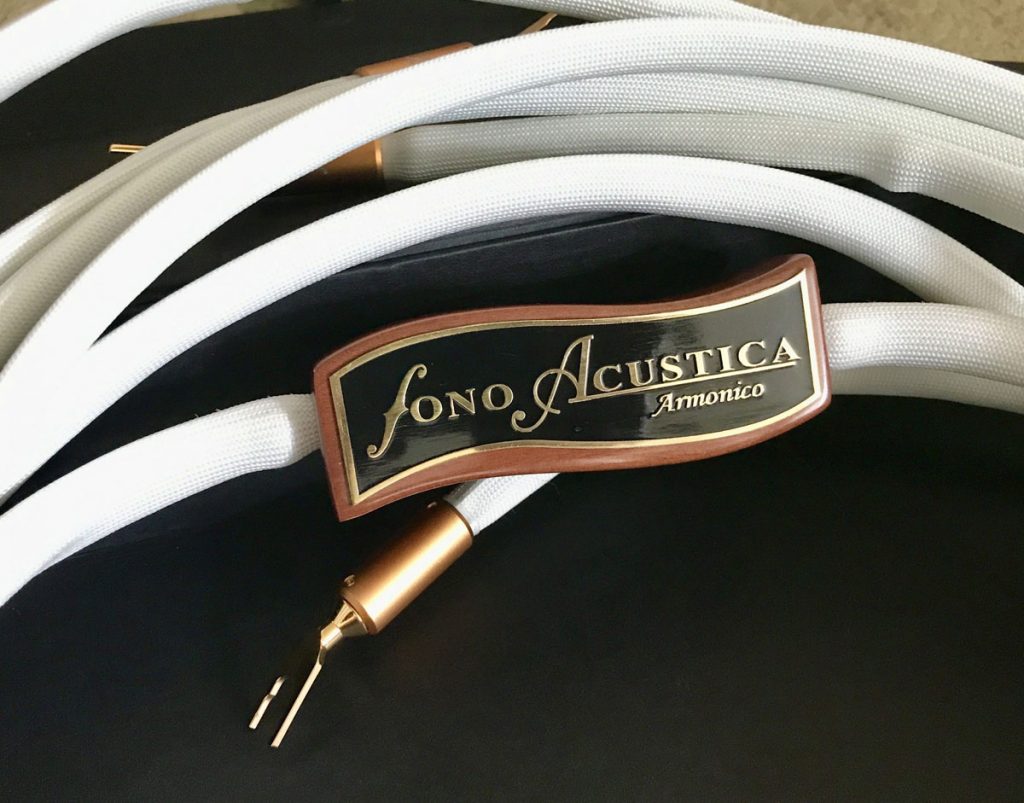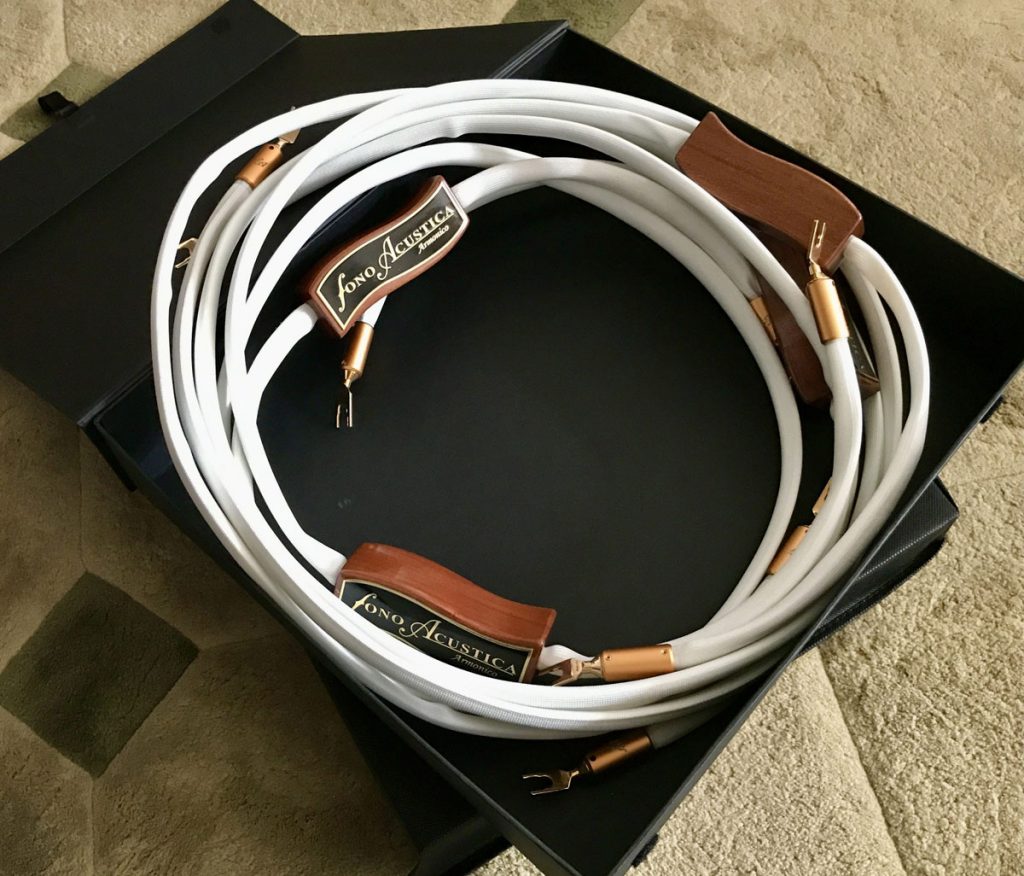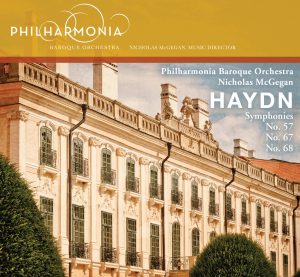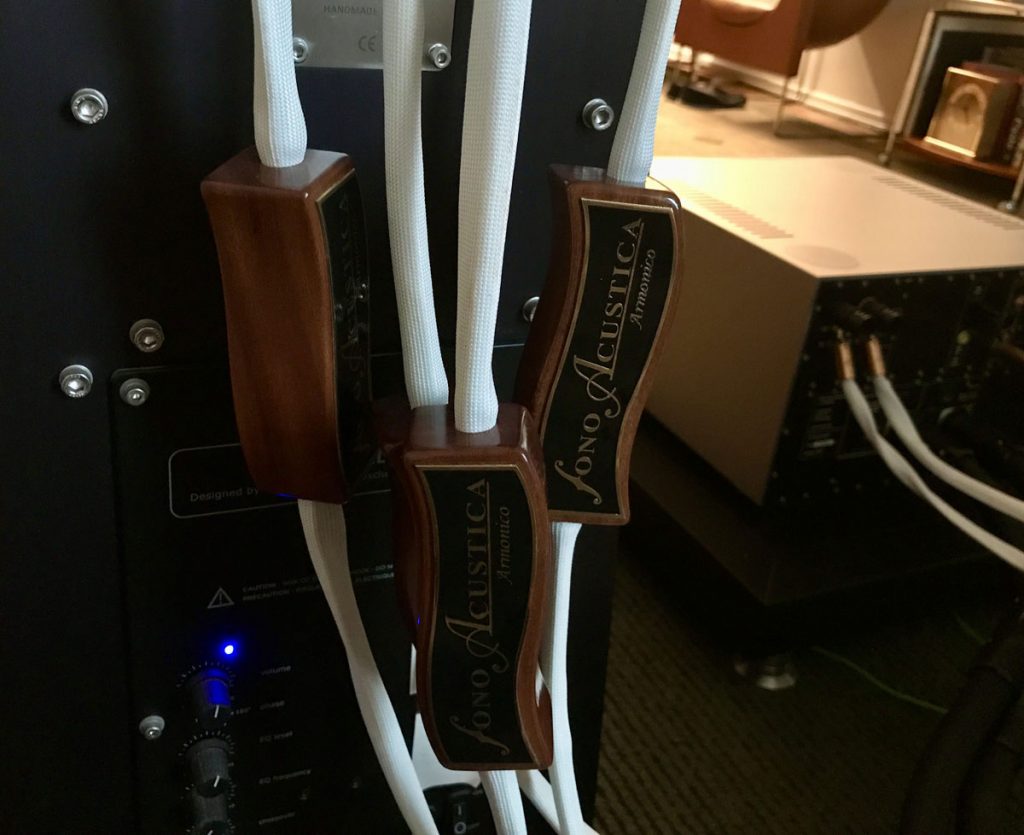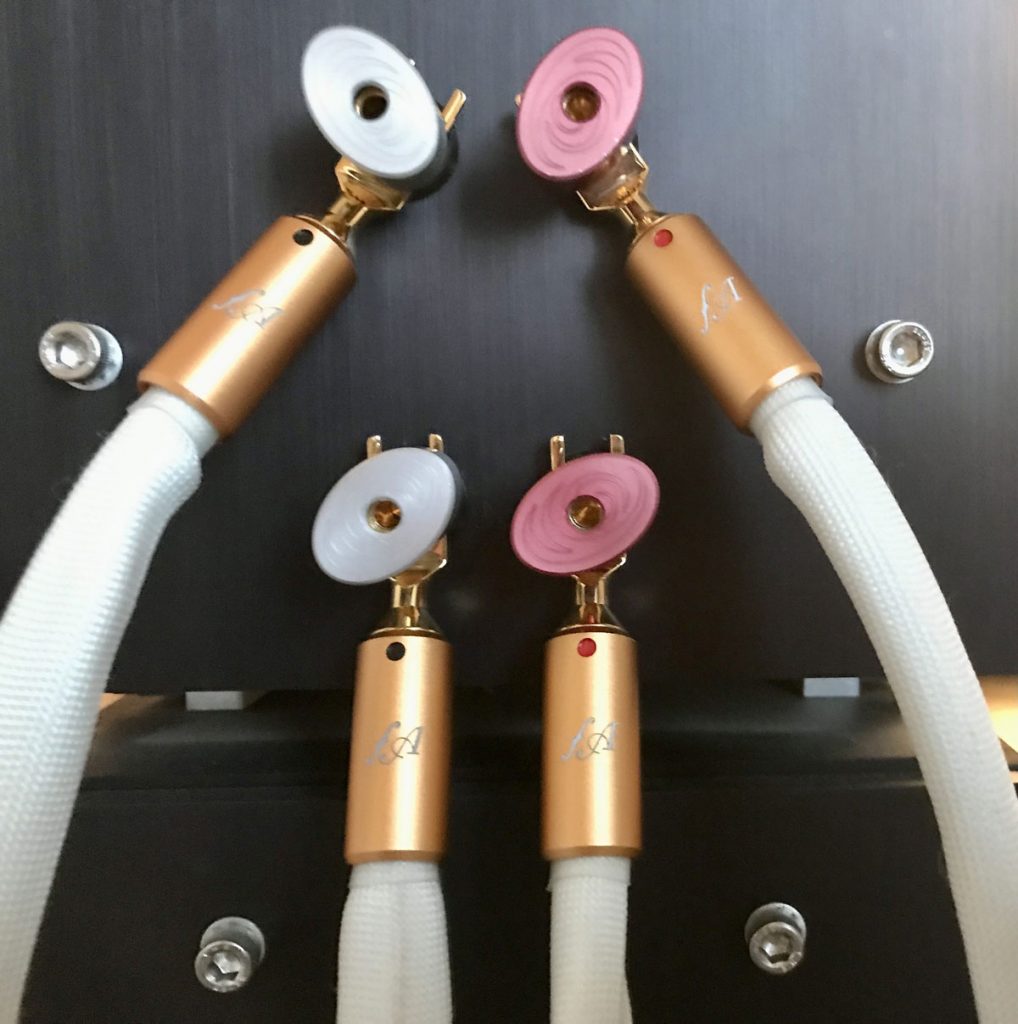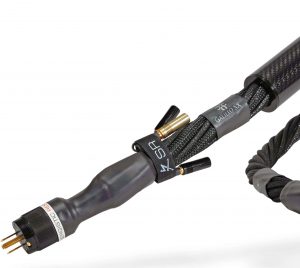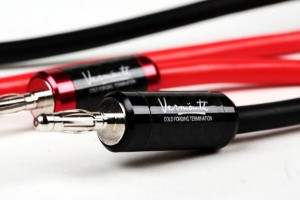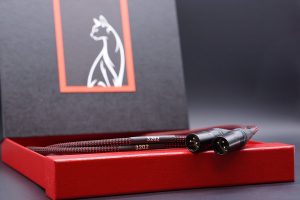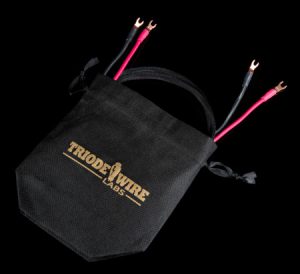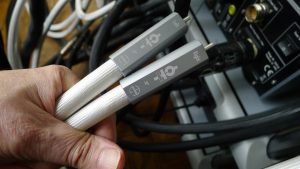The Covid-19 pandemic turned the world topsy-turvy, devastating lives. Nothing is the same. We are beginning to turn right-side up, so to speak, but life must now be perceived through differently tinted glasses. Where we go from here—what comes next? One personal side effect for me was the suspension of my audio sessions for the duration. Following the CDC guidelines, I've allowed no visitors in my home. The panel stays in touch with each other; to date, everybody's doing well.
That leaves Lynn and me on the couch every night. At first the prospect of fewer voices dampened my enthusiasm, but we soon fell into a routine. A year and a half in, it's clear that we've diverged from the way it used to unfold.
Without input from the panel, our commentary has shifted. While Lynn has always gravitated towards the musical content, I straddled music and audiophile perspectives. Now my orientation has veered alongside hers, to the neglect of the audiophile report card. This viewpoint, as reflected in my recent articles, is not the well-traveled path: I don't encounter many fellow reviewers on this road.
Today we'll continue with the third installment of wire from Fono Acustica's Armónico line. Two lengths of full-range Armónico speaker cable are strapped to my bi-wired YG Anat Signature loudspeakers; the Armónico XLR interconnects and power cords were already on the floor.
Frequency Coherency
If you recall, back in the old days (say 15 years ago), much ink was spilled in the high-end press over frequency coherency, the idea that all frequencies should line up in the time domain and arrive together as a block, with none lagging. This was a big deal back then because it was the exception. Since it's not mentioned much now, it's fair to say we've moved on.
It's also fair to say the measure of a wire (or component) is how much it reveals within that block of coherent sound. An inexpensive wire will convey the gist of the composition coherently—so will a table radio. You pay the big bucks for a wire that opens it up and exposes smaller blocks, one for each of the inner voices. One instrument may be getting louder; another may be in decrescendo. Some may be accenting the upbeat; another stressing the downbeat. At any given time, a variety of accents, inflections, rhythms, and all kinds of image shapes are arrayed across the stage. The perfect wire would render all of this, giving each as much integrity as the lead instrument carrying the main melody. To pull this off, the wire must possess a trio of qualities: fine resolution, fluid dynamics, and extreme stereo separation. Not just left/right, but the ability to separate musicians that are sitting next to each other. Then voices start popping out and acting independently in their characteristic manner.
That's what an excellent wire does. So, what is Lynn's comment upon first hearing the Armónico speaker cable? "How is it possible to hear nine musical sections doing nine different things simultaneously?"
I put on Haydn Symphony No. 57, with Nicholas McGegan and the Philharmonia Baroque (PBP-08). It is in the key of D major, a sunny chord that imparts plenty of uplift, and McGegan's Philharmonia Baroque were emphasizing the upbeat. It was tempting to assign this buoyant quality to the speaker cable, but I knew more sampling must come first.
I pulled out another Haydn disc, Symphony No. 91 in E flat major, with Rene Jacobs and the Freiburger Barockorchester (HMC 901849). This time the Armónico speaker cable's incisive view presented a mixed bag, with double basses pounding hammer strokes on the downbeat, even as the violin section countered with a lilting upbeat inflection. You simultaneously had lift and lightness (the violins) and downward pummeling (the double basses). The counterpoint of contrasting accents set up a musical drama that was quite thrilling. The grateful listener was granted a choice of interesting, insightful things to chew on, as he tracked activities across the stage.
The Saga of the Soprano
I dread coloratura sopranos with powerful chops. I've heard them reduce many systems to a quivering mass. Can you tell me: What system can reproduce their top notes cleanly? When those peaks come along, the sweetness disappears, quality deteriorates, it becomes unlistenable. This has been the case with every system I've owned. (Maybe that's why I'm not a fan of opera.)
As it happened, a number of products coming through lately addressed this problem, not that I consciously set out with that aim. It unfolded serendipitously. First were the Audience frontRow wires I wrote about recently HERE, an accurate cable line with good control of the top end and healthy midrange. Then came Isolation Platforms from Marigo Audio, followed by the audiodharma Cable Cooker (reviews coming soon). All furthered this process of taming the treble. They also had the side effect of embellishing the midrange. At each step I thought, "Yeah, that sounds good. Now I'm done." Then it repeated with the next arrival. When the Armónico interconnect and power cord came along, we took a giant step in that direction, plus added a warming trend.
This is kind of weird, I thought—what's up with the treble and mids? (The bass too, for that matter. It seems you never can have enough.)
I looked around, searching for a better understanding. My gaze takes in my beloved YG Acoustics Anat Signature loudspeakers. Dynamic driver speakers do so many things excellently, but they are not noted for having a full-bodied midrange and the sweetest treble. Then I shift to the array of CH Precision components. I'm sure they all measure beautifully on the test bench in Switzerland, but flat response in the lab is no guarantee of what will happen in my room. Either of these may be complicit, but it's unlikely.
I settle on the room itself. This is the big one. Sound behavior in a real room always presents issues. Now, I'm going to surprise you by suggesting that the second biggest challenge for the audiophile is RF pollution. Oh, man, it's all over—the modern domicile is a swamp. No one grasps the full extent, but, from what I've read, it's easy to imagine RFI could be responsible for an artifact-laden treble and a blurry, or thin, midrange. (It's a working hypothesis, at any rate.)
My Favorite Soprano
Back to the sopranos, there are a select few I really like. One of my favorites of the Baroque genre is Patricia Petibon, who came to my attention as a member of William Christie's celebrated early music group, Les Arts Florissants. This was back in the nineties, when Christie had an excellent instinct for discovering vocal talent. Petibon is a coloratura soprano with similarities to Natalie Dessay. She is up to splendidly quirky shenanigans on her solo disc Airs baroques Français dating from 2001.
The Armónico interconnect and power cable grappled with Petibon's extreme extension. The wires have a calming effect on the treble, making it less edgy, less prone to flying out of control. And, sure enough, the speaker cable assisted the remediation. (By what means they do it I'm not sure. Perhaps that hardwood block plays a role in RFI suppression?)
A Little Different from the Interconnect and Power Cord
All three wires brought more body and control to the treble, but while the Armónico interconnect and power cable made the treble slightly less energetic and favored the midrange down through upper-bass, the speaker cable has an evenly disbursed frequency spectrum. It is notably faster, with shorter decays, and less warmth, which make it an excellent complement for the interconnect and power cord.
A funny thing happened when the speaker cable met up with the interconnect and power cord. In previous reviews of the interconnect and power cord, I noted their tendency to put you in an acoustic space, a warm, midrange dominant, reverberant, nice sounding space. It happened often enough that I had to consider it a coloration. Well, with the amalgam of the three wires, I'm not hearing the coloration any more. The space is more neutral, and it brought me darn close to trouble-free reproduction of Airs baroques Français.
Installation and Burn-In
Two lengths of full-range Armónico speaker cables ran to my bi-wired YG Anat Signature loudspeakers. FA advised, "You will notice the difference from the moment you hit PLAY. Give them 24 hours to fully settle into your system." (The same advice was given for the power cords.) The first day the top-end was not stretching out. After another 12 hours we were in business; there was no issue with extension.
A Design Statement
Felix Avalos, the proprietor of Fono Acustica, provided this design statement:
Thermo-treated, precious-metal conductors are blended in proprietary ratios in a special geometry that must be formed by hand. Large vibration isolating tubing with air-insulated dielectrics and ultra-effective shielding are supplemented with external anti-resonant African hardwood blocks, which reduce structural and airborne vibrations. Separate cables and resonance blocks are used for each signal phase—a costly approach that we found superior to shared geometries and networked terminations. Termination using custom made 24K gold connectors. Hand-soldered joints using alloy approaching 100% pure silver.
In Armónico, through careful attention to design and materials, we have created a resolving, dynamic, and refined speaker cable that is faithful to the source in realism, and faithful to the listener in the communication of musical emotion.
The Armónico line is 10 years old. What has changed for the speaker cable?
Yes, the Armónico speaker cables are 10 years old, and what has changed is the look of the cable (it conforms to the format of the Armónico interconnect & power cord cables). As for the internals, the solid core silver/gold wire alloy is unchanged, but there is no longer a Teflon dielectric. This is true only for the speaker cable model. Every other Armónico cable uses customized Teflon.
The Family Cosmetics
The family resemblance between the speaker cable, XLR interconnect, and power cord runs the gamut: same color scheme; loosely fitting white fabric covering; large, copper-colored, barrel end caps; African hardwood block with the company logo on it. (N.B.: the wood block should go on the speaker end.) Gazing at my rig, the uniform look of the wires is aesthetically pleasing.
The Armónico line is on the other side of the fence from the massive, overbuilt crowd, as far as appearance. Some of those wires sport terrific fit-n-finish, alluring dielectric coverings, expensive metalwork—and stratospheric price tags. The Armónico shares the MSRP, but that's all: it looks distinctive, nicely designed, and well-made, but nothing shouts expense from the outside; what's inside is proprietary. The speaker cable doesn't weigh much and is totally flexible (although Felix cautioned against twisting the cables too much). Other than the hardwood block, there aren't any surplus parts (i.e., those without an obvious purpose).
Conclusion
Sure, it's unfair. To jump from a $5000/2m pair cable to this $20,200/2m pair is hardly a level playing field. Any observations must be tempered by that consideration. I was quite content with the Audience frontRow speaker cable. If I only had $5K in my checkbook, they'd be my go to. But often in audio—as in life—new worlds await that demand to be explored.
That's the beauty of this hobby—there's always the next thing around the corner that shakes up our complacency. That's what keeps it vital. The Fono Acustica Armónico speaker cables (like the rest of the Armónico cable line) altered my presentation in a fundamental way by placing emphasis on the musical side, shifting attention away from the standard audiophile curriculum.
A funny thing happened when the speaker cable met up with its siblings. The three wires melded in a way that formed an ideal amalgam transcending each of the parts. As Felix put it, "To Spanish vintners, the term Armónico signifies harmonious balance: the maximum expression of quality." A full-bodied red wine is an apt metaphor for the Armónico wires' personality. They put the music forward and make it accessible in a pleasurable way that other contenders don't.
Armónico Speaker Cable
Retail: 16,600/2m (Euro), $20,206/2m (USD)
Fono Acustica




